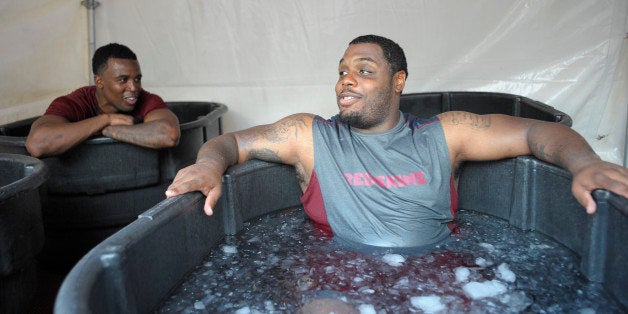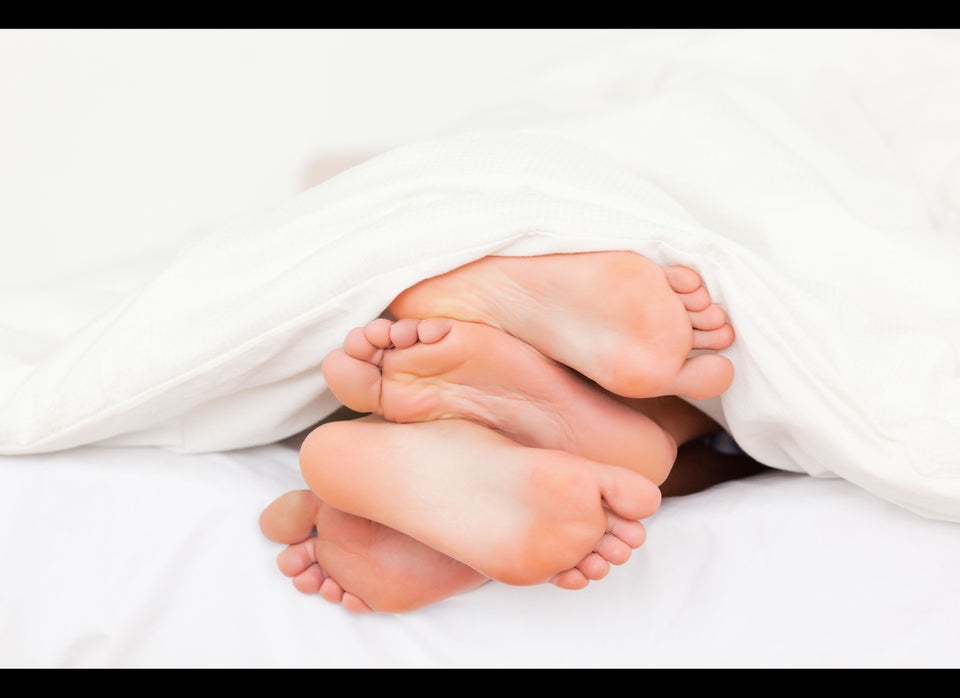
Oddly popular for such an uncomfortable practice, the ice bath is hotly (sorry) debated in the fitness world. A new study adds fuel to the fire with the finding that a chilly dip after a tough workout won't do anything to ease soreness or reduce the loss of strength that's typical post-workout.
In the study, researchers had 20 active men run for 40 minutes downhill on a treadmill to induce muscle damage. After, half sat for 20 minutes in an ice bath at 5 degrees celsius (that's around 40 degrees Fahrenheit!) while the other half stayed warm and dry.
When it came to a battery of post-bath tests, including quad strength, thigh circumference and reported soreness, there was no difference between the two groups, HealthDay News reported. The men who sat in the frigid tub did show a lower measure of a particular blood marker for inflammation, but not significantly, according to the study.
Lead researcher Naomi Crystal said in a statement that she's not entirely convinced ice bath devotees should hop out of the tub, but advises exercisers to use them sparingly, after the highest-intensity workouts. "If it doesn't work, you don't want to waste your time," she said. "For day-to-day athletes, I wouldn't recommend them. They're painful, and they're time consuming."
That's a sentiment echoed by others interested in the best way to recover from intense exercise. Runner's World columnist Alex Hutchinson imagines that in lab settings, ice baths may not be cold enough or long enough, or that the level of muscle damage or fatigue achieved doesn't compare to the effects of, say, a marathon. As such, he believes ice baths may still serve a purpose. A large review of the research on the topic exposes a number of conflicting results, but anecdotal evidence remains -- and runners, cyclists and professional athletes will likely continue to debate about their ice baths until they turn blue in the face (or is that just the water temp?).
It's tempting to keep soaking under the pretense that it may not help, but it can't hurt -- right? Not so fast. Exposing your body to extremely cold temperatures for too long a period of time can be dangerous. If you're going to soak, try 54 to 60 degrees for six to eight minutes to play it safe, according to Active.com.
What do you think? Cast your vote in the poll below!
